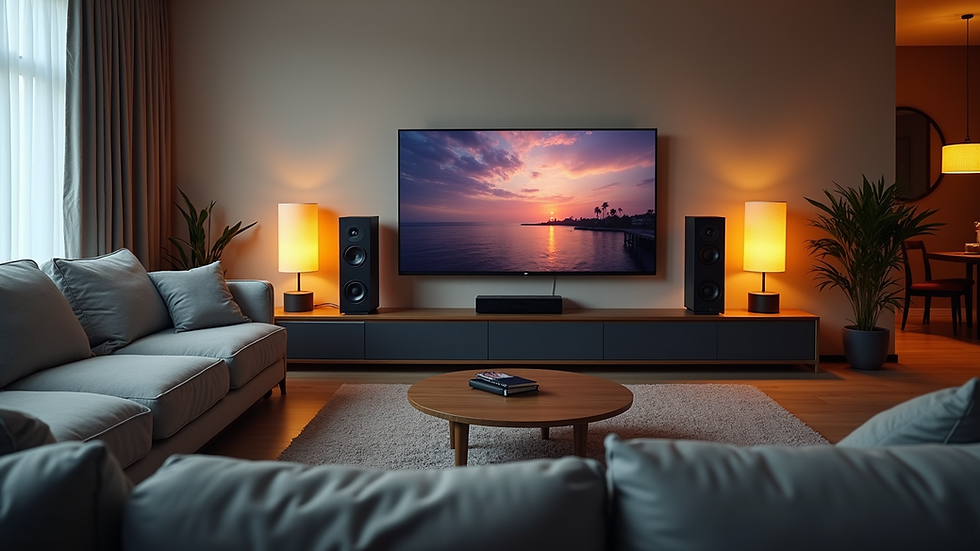Practical Property Maintenance Tips for Homeowners
- Timothy Lowe
- Oct 6
- 3 min read
Owning a home is a rewarding experience, but it also comes with the responsibility of regular upkeep. Proper maintenance not only preserves the value of your property but also ensures a safe and comfortable living environment. This guide offers practical home upkeep advice to help you stay on top of essential tasks and avoid costly repairs down the line.
Why Home Upkeep Advice Matters for Every Homeowner
Maintaining your home is more than just fixing things when they break. It involves proactive care to prevent issues and extend the life of your property’s components. Regular upkeep can:
Save money by avoiding expensive emergency repairs.
Enhance safety by addressing hazards like faulty wiring or structural damage.
Improve comfort by keeping heating, cooling, and plumbing systems running efficiently.
Boost curb appeal and property value through well-maintained exteriors and interiors.
For example, cleaning gutters twice a year prevents water damage to your roof and foundation. Similarly, servicing your HVAC system before the summer and winter seasons ensures it operates efficiently, reducing energy bills.

Essential Home Upkeep Advice: Seasonal Maintenance Checklist
Breaking down maintenance tasks by season helps you stay organized and ensures nothing is overlooked. Here’s a practical checklist for each season:
Spring
Inspect the roof for damage from winter storms.
Clean gutters and downspouts.
Service the air conditioning system.
Check windows and doors for drafts and reseal if necessary.
Test smoke and carbon monoxide detectors.
Summer
Trim trees and shrubs away from the house.
Inspect and repair exterior paint or siding.
Clean and seal decks or patios.
Check plumbing for leaks, especially outdoor faucets.
Maintain lawn irrigation systems.
Fall
Service the heating system.
Clean chimneys and fireplaces.
Inspect and repair weather stripping on doors and windows.
Drain and store garden hoses.
Rake leaves and clear debris from yards.
Winter
Monitor for ice dams on the roof.
Keep walkways clear of snow and ice.
Check for drafts and insulate pipes to prevent freezing.
Test emergency generators if applicable.
Review and update your home emergency kit.
Following this seasonal approach ensures your home is prepared for changing weather and reduces the risk of damage.
How to Properly Maintain Your House?
Proper maintenance involves a combination of regular inspections, timely repairs, and preventive measures. Here are some actionable steps to keep your home in top shape:
Conduct Regular Inspections
Set a schedule to inspect key areas of your home:
Roof and gutters: Look for missing shingles, leaks, or blockages.
Foundation: Check for cracks or signs of water pooling.
Plumbing: Inspect under sinks and around appliances for leaks.
Electrical system: Test outlets and look for frayed wires.
HVAC: Replace filters monthly and schedule professional servicing annually.
Prioritize Repairs
Address small issues before they escalate. For example, a minor leak can cause mold and structural damage if ignored. Fixing a cracked window seal early prevents heat loss and reduces energy costs.
Keep Records
Maintain a log of maintenance activities, repairs, and upgrades. This helps track what has been done and when, making future upkeep easier and more efficient.
Use Quality Materials and Tools
Invest in durable materials and reliable tools for repairs and maintenance. This ensures longevity and reduces the frequency of replacements.
Hire Professionals When Needed
Some tasks require expert knowledge, such as electrical work or major plumbing repairs. Don’t hesitate to call licensed professionals to ensure safety and compliance with local codes.

Practical Tips for Maintaining Key Home Systems
Each major system in your home requires specific care to function optimally:
Plumbing
Check for dripping faucets and running toilets.
Insulate exposed pipes to prevent freezing.
Clean drains regularly to avoid clogs.
Know the location of your main water shutoff valve.
Electrical
Avoid overloading circuits.
Replace damaged cords and outlets.
Install surge protectors for sensitive electronics.
Test GFCI outlets monthly.
Heating and Cooling
Change filters regularly.
Keep vents and registers clean and unobstructed.
Schedule annual professional tune-ups.
Use programmable thermostats to save energy.
Exterior Maintenance
Power wash siding and walkways.
Repair cracks in driveways and patios.
Maintain landscaping to prevent moisture buildup near the foundation.
Check fences and gates for damage.
Interior Maintenance
Clean and inspect appliances.
Check for signs of pests and address promptly.
Maintain caulking around tubs and sinks.
Repaint walls and ceilings as needed to prevent wear.
By focusing on these areas, you can avoid many common household problems and keep your home running smoothly.

Staying Ahead with Smart Property Maintenance Tips
Incorporating technology and smart solutions can simplify home upkeep. Consider:
Smart thermostats to optimize heating and cooling.
Leak detectors that alert you to plumbing issues early.
Automated irrigation systems to maintain your lawn efficiently.
Home security systems to protect your property.
Additionally, using a reliable resource for property maintenance tips can provide tailored advice and professional services to keep your home in excellent condition.
Regular maintenance is an investment in your home’s future. By staying proactive and organized, you can enjoy a safe, comfortable, and beautiful living space for years to come.





Comments